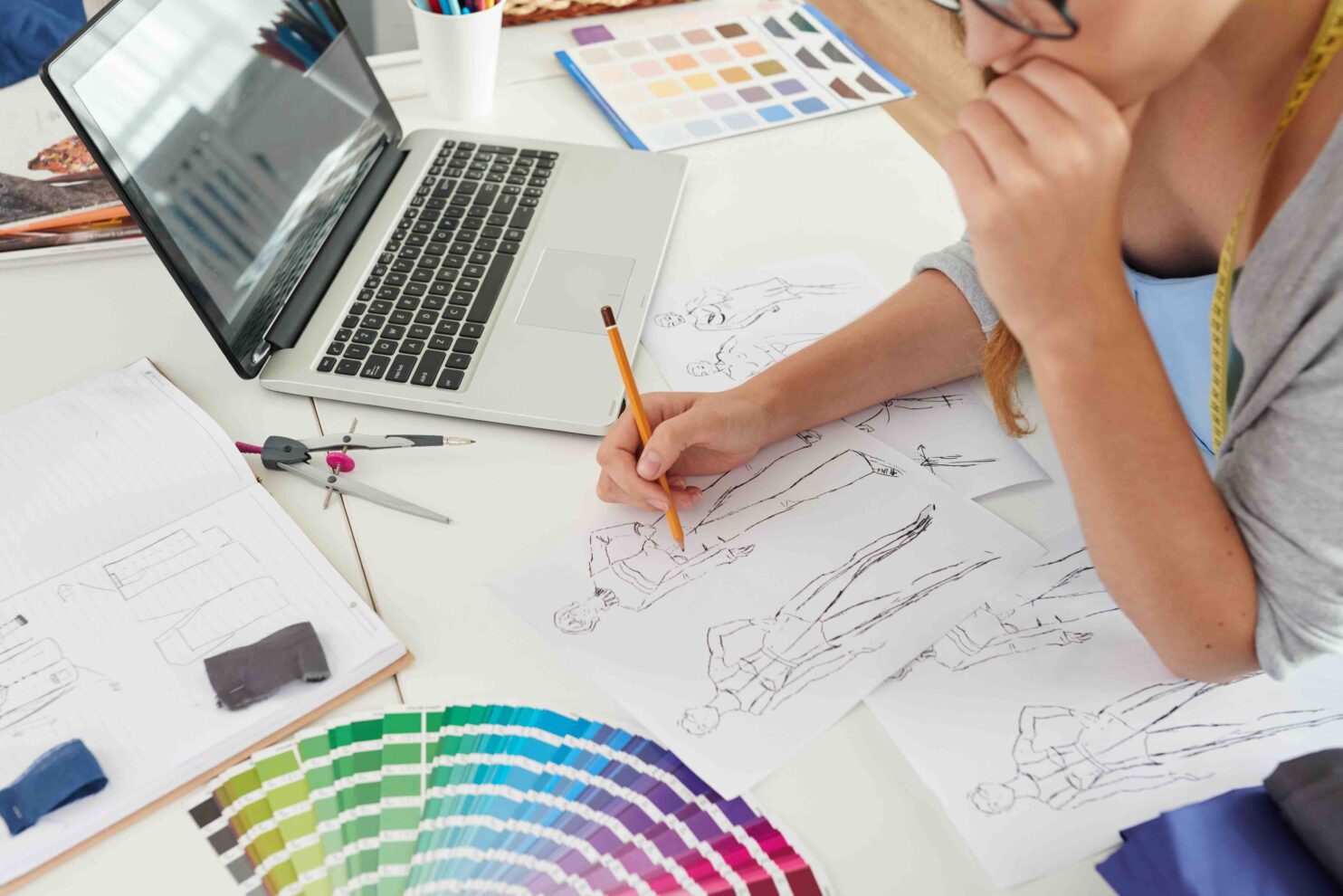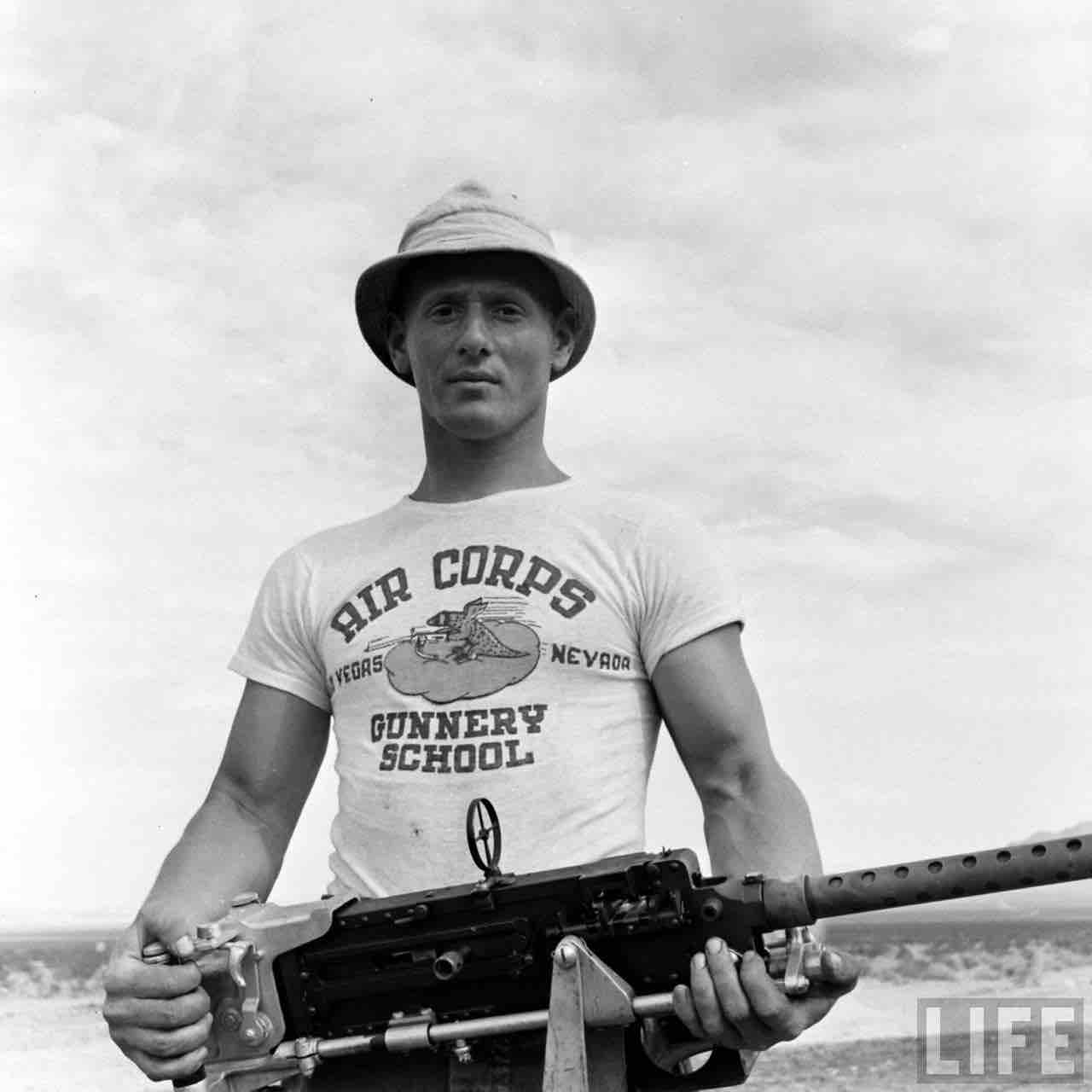
PHOTO COURTESY: Life Magazine (1942)
It is an iconic piece of apparel that spans gender, socio-economic status and geographic location. The t-shirt is universal fashion that fits all sizes and can be dressed up or down. While graphic t-shirts are a staple in our wardrobe, they are historically a relatively new garment.
Printed t-shirts date back to 1942, when an Air Corps Gunnery School shirt landed on the cover of Life Magazine; a short time later, resorts began printing their own versions. It wasn’t until the 1970’s that t-shirts became the powerful messaging tool we know them as today.
Now, people wear t-shirts to make statements about politics, social beliefs, self-expression, and to support businesses.
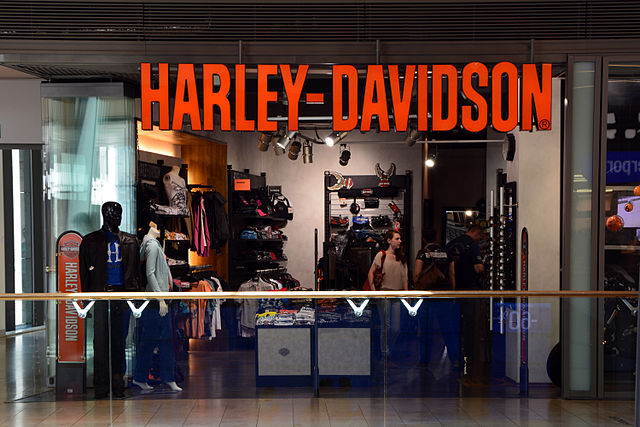
PHOTO COURTESY: Frank Schwichtenberg (CC)
Loyal-Tee
When mom and pop restaurants lost dine-in revenue during the pandemic, many created t-shirts as a way to make up the lost income. Customers ‘ate it up’, purchasing the t-shirts to provide alternate support and to show loyalty to the businesses.
Branded apparel is not limited to t-shirts, many businesses opt to add their logos to trendier items for more elevated offerings, and some even create their own lines to meet customers specific needs.
Harley Davidson is a good example of a successful apparel brand extension. In 1914, it began selling sweaters, jerseys, leggings and gloves, all designed for riders. Over the course of 75 years, the iconic company continued adding to its riding apparel and in 1989 it expanded into ready-to-wear for men, women and children. The decision proved successful, Harley sold more than 3 million items by 1991 and was honored with a Council of Fashion Designers Award the following year.
Beyond the Tee.
Not every brand will see this level of success, and if they do, it doesn’t happen overnight. According to Stars Design Group CEO, Bret Schnitker, many businesses begin a journey into apparel with hats, t-shirts and hoodies and then graduate to more elevated apparel, adding logos to pre-determined products sold through a membership organization like ASI (Advertising Specialty Institute).
Schnitker says all of these options are good for business, “The big key strength is they all become walking, breathing billboards, everywhere, advertising for your company and I think that’s a huge benefit”
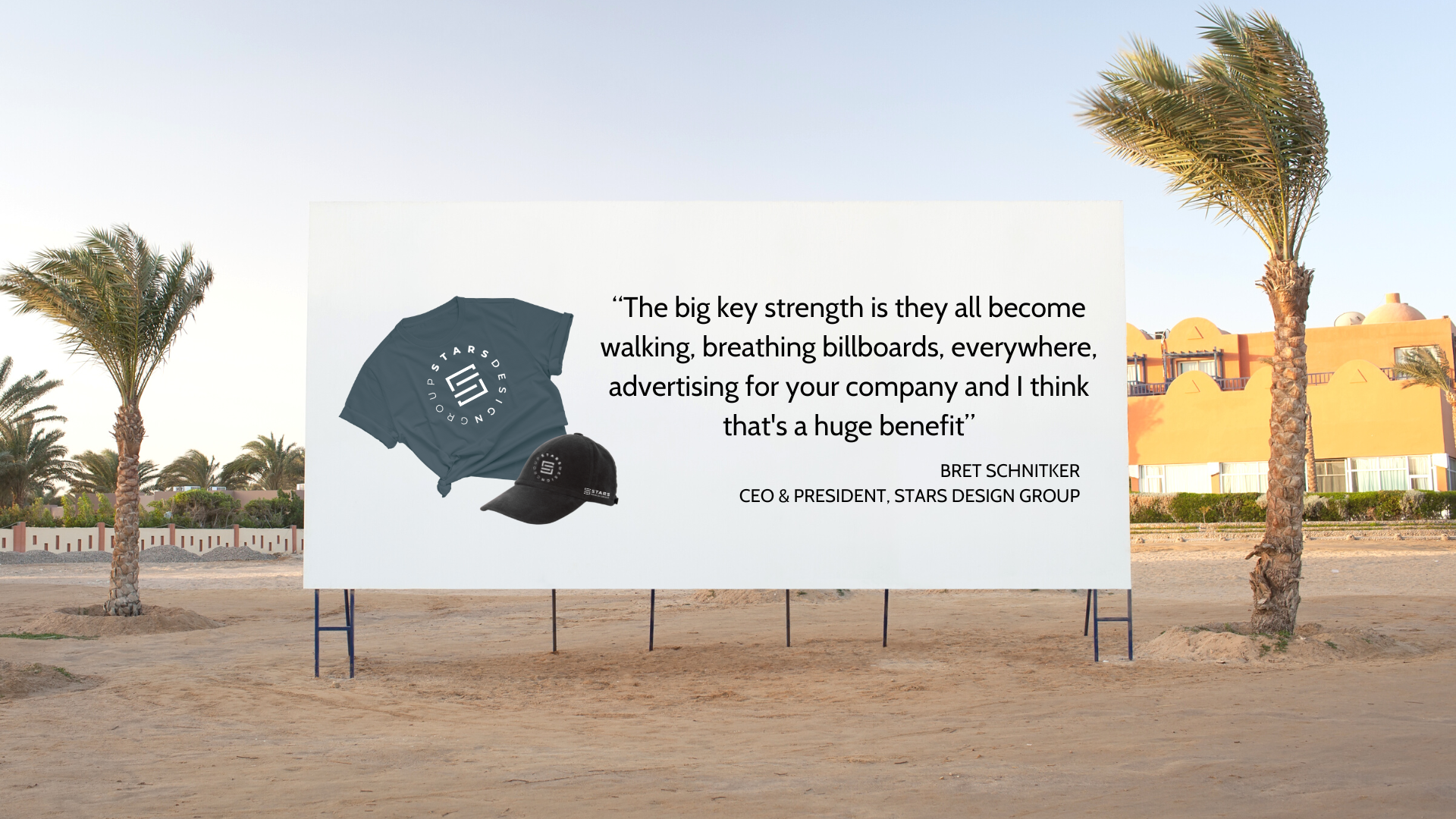 It’s hard to argue with the statistics, according to ASI Central, the cost per impression for a $7 t-shirt comes in at two tenths of a cent. When it comes to outerwear, a $20 jacket breaks down to one third of a cent per impression. Most marketing statistics report it takes a minimum of 20 touch points to create brand awareness and convert to sales. Adding apparel into the mix is a cost effective option that certainly beats the average spend online for customer acquisition!
It’s hard to argue with the statistics, according to ASI Central, the cost per impression for a $7 t-shirt comes in at two tenths of a cent. When it comes to outerwear, a $20 jacket breaks down to one third of a cent per impression. Most marketing statistics report it takes a minimum of 20 touch points to create brand awareness and convert to sales. Adding apparel into the mix is a cost effective option that certainly beats the average spend online for customer acquisition!
Quali-Tee
ASI clothing can be a good intermediate option for some brands, however, it lacks complete customization, and may sacrifice quality. In many cases, the garments  used in these types of programs are entry level products with fit inconsistencies and an inferior hand feel, both of which can reflect poorly on the brand.
used in these types of programs are entry level products with fit inconsistencies and an inferior hand feel, both of which can reflect poorly on the brand.
According to the Promotional Products Association International (PPAI) 72% of people believe the quality of a promotional product is directly related to the reputation of the company. However, promotional products can be a good option for businesses to explore proof of concept and vet if the time is right for expansion into apparel, but it is important to ensure the quality matches the level of the brand.
When the Time is Right

Creating a custom apparel line won’t work for all companies. It is important to have a clear understanding of the brand’s demographic, unique approach, and what it represents in the marketplace, Schnitker says, “you’ve got to know that you’re big enough to have a loyal following, somebody that believes in and likes your brand, and I think that’s certainly the very first step in determining whether you should walk down that route.”
ROI
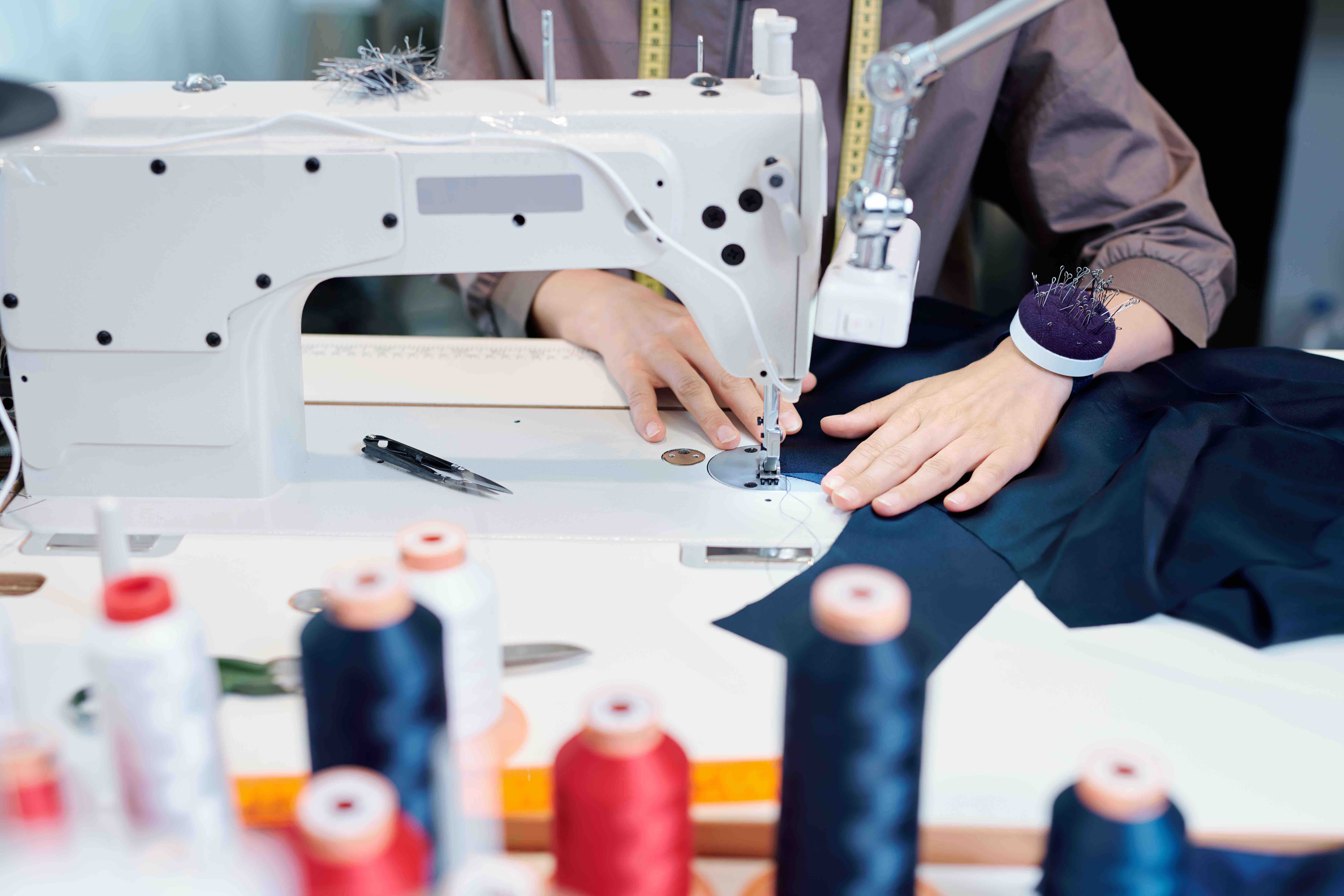
Manufacturing time and cost are other key considerations in the decision-making process. Shifting to custom apparel will take considerably more time to manufacture, even though the per item cost is lower. While brands will benefit from greater control of colors, design and quality, they will also contend with larger minimum orders which will require a greater financial commitment and more planning to hit market goals.
While the cost of the apparel program should always be considered, it doesn’t necessarily need to be weighed for a strictly profit based return on investment. Schnitker says “remember, it’s like spending money on a billboard, they’re really looking at the statistics of ROI, more in line with marketing and advertising than an extension of a brand.”
Summary
Adding an apparel program can certainly be good for the bottom line. It is a cost effective way to build brand awareness through organic impressions, however, it may not be right for every business. In order to be successful, brands must have a loyal customer base that is interested in wearing the apparel and the products need to meet the customer’s expectation of style and quality.
Brands interested in exploring apparel should consider testing the market with t-shirts, hoodies and hats. If there is continued success, they should consider transitioning to overseas manufacturing for strategic custom pieces that can validate proof of concept. To do this effectively it is important to partner with qualified fashion industry professionals to guide garment selection, production and delivery.
If you are interested in learning more about building an apparel brand extension, check out Season 3 Episode 4 of the Clothing Coulture podcast.
 Denise Naughton is an Emmy award-winning producer and journalist who has worked in all sides of media. At Stars Design Group, Denise uses her journalism and production expertise in support of all media and communication outreach.
Denise Naughton is an Emmy award-winning producer and journalist who has worked in all sides of media. At Stars Design Group, Denise uses her journalism and production expertise in support of all media and communication outreach.

